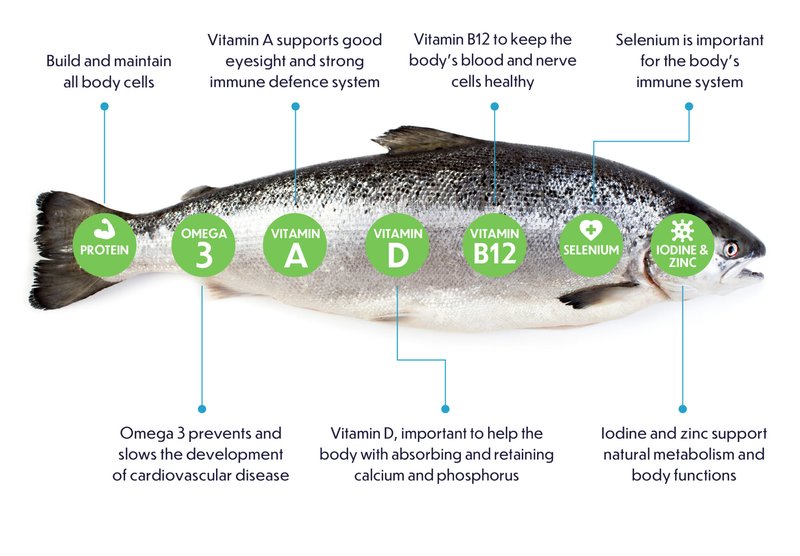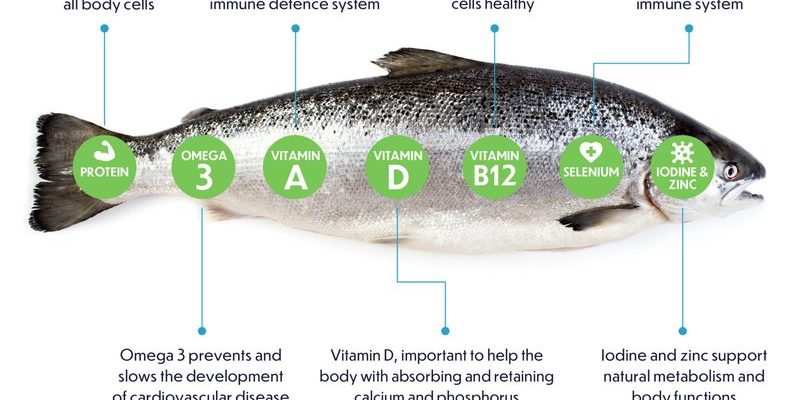
Imagine you’re at a buffet. There are all sorts of delicious options laid out, and you have to pick the right balance to stay healthy. Salmon operate the same way in their natural habitat. They have a variety of food sources that provide the nutrients they need to grow strong and healthy. In this guide, we’ll explore what salmon eat, their feeding schedule, and tips for ensuring they get the right nutrition. Whether you’re curious for your next fishing trip or want to care for salmon at home, you’re in the right place.
The Natural Diet of Salmon
Salmon are carnivorous fish, which means they primarily eat other animals. Their diet consists of a range of food sources depending on their age and habitat. Young salmon, known as fry, typically start their lives munching on tiny zooplankton and phytoplankton. As they grow into smolts, their diet shifts.
Here are some common foods that salmon eat in the wild:
- Zooplankton: Tiny crustaceans that serve as an essential food source for juvenile salmon.
- Insects: They feast on aquatic insects, especially when they’re near rivers and streams.
- Smaller Fish: As adult salmon, they often eat smaller fish like herring and anchovies.
- Squid and Crab: These protein-packed options are also part of their diet when available.
By understanding what salmon eat in the wild, you can better replicate this diet if you’re trying to raise them in an aquarium or manage a fishery.
Just like humans need a well-rounded diet, salmon need specific nutrients for optimal health. Their diet should include a good balance of vitamins, minerals, and proteins. Let me explain a few key components:
1. Protein: This is the star of the show. Salmon require high protein levels to support growth and muscle development. In fact, their bodies can utilize a higher proportion of protein than many other fish.
2. Fatty Acids: Salmon are known for their healthy fat content. They thrive on Omega-3 fatty acids, which are vital for heart health. This is one reason why you often hear about salmon being a superfood for humans too!
3. Vitamins and Minerals: Essential vitamins like A, D, and E are crucial for salmon’s overall health. They also need minerals like calcium and phosphorus for strong bones.
To put this all together, a well-balanced diet is key to keeping salmon healthy and vibrant. If they’re not getting the nutrients they need, it can lead to stunted growth or health issues.
Feeding Schedule for Salmon
Timing is everything when it comes to feeding salmon. Their feeding patterns can change based on their life stage and environmental factors, such as temperature and season. Here’s a simple breakdown of how you might organize a feeding schedule for salmon:
– Juvenile Salmon (Fry): Feed them several small meals throughout the day. They’re growing rapidly, so they need constant access to food. Think of it as having a snack every few hours!
– Smolt Stage: Transition to larger meals, but reduce the frequency to about 3-4 times a day. This is when they start to prepare for life in the ocean, so you want to be sure they’re getting enough nutrition.
– Adult Salmon: As they reach adulthood, they can eat larger meals less frequently, often once or twice a day. During this stage, focus on high-energy foods that support their journey, especially if they’re migrating.
Maintaining a consistent feeding schedule is essential. It helps mimic their natural feeding habits and promotes overall health.
Providing the Right Food for Salmon
If you’re raising salmon or just want to ensure they’re getting the best nutrition, understanding which foods to provide is key. You can choose from several options depending on whether you want to feed them in their natural habitat or in a controlled environment.
1. Commercial Fish Feed: Many fish farms use specialized pellets that are designed to meet the nutritional needs of salmon. These are often high in protein and fortified with vitamins and minerals. They’re convenient and promote optimal growth.
2. Live Food: This includes small fish, insects, or zooplankton. While it might be a bit more work, providing live food can stimulate their natural hunting instincts and is usually packed with nutrients.
3. Frozen or Freeze-Dried Options: If you can’t access live food, consider frozen or freeze-dried options. These can be just as nutritious and are easy to store.
4. Homemade Diet: Some enthusiasts make their own salmon food using fish, shellfish, and vegetables. Just make sure it balances proteins and fats properly.
Choosing the right diet is important. It not only affects the fish’s growth but their flavor if you’re planning to catch and eat them.
Common Problems in Salmon Feeding
Sometimes, things don’t go as planned, and salmon can face issues related to diet. Here are a few common problems and how to avoid them:
1. Overfeeding: Salmon can be quite greedy, but overfeeding can lead to water quality problems and health issues. Stick to the schedule and portion sizes to avoid this.
2. Nutritional Deficiencies: If their diet lacks variety or essential nutrients, salmon may suffer from illnesses or stunted growth. Rotate their diet and ensure they’re getting a mix of foods.
3. Water Quality: The food you provide impacts the water quality too. Uneaten food can pollute the tank or pond, so make sure to remove excess food after feeding time.
Addressing these problems early can save you a lot of headaches down the road. If you notice any unusual behavior or health issues in your salmon, consider adjusting their diet or consulting with a professional.
Salmon Feeding in Wild vs. Captivity
Feeding practices can differ quite a bit between wild salmon and those raised in captivity. Let’s compare the two:
– Wild Salmon: They enjoy a diverse and natural diet based on their environment. They eat whatever is abundant, which helps them stay healthy and adapt to changing conditions.
– Captive Salmon: These fish rely on whatever food you provide. It’s your job to make sure they’re getting a balanced diet tailored to their needs. This can be a bit more challenging since you have to think about every nutrient they might be missing from a natural setting.
In a perfect world, you’d want to mimic the wild diet as closely as possible while providing the consistency and control that comes with captivity. Your salmon will thrive with the right balance.
So, there you have it! Understanding what salmon eat, how to feed them, and their nutritional needs is essential for their health—whether they’re swimming in the wild or living in your aquarium. By offering the right foods and sticking to a sensible feeding schedule, you’re setting your salmon up for success.
Remember, a happy salmon is a healthy salmon. And once you grasp the ins and outs of their diet, you’ll feel much more confident in caring for them or enjoying your next fishing adventure. Keep learning, and you’ll be on your way to making sure your salmon receive the best nutrition possible!

